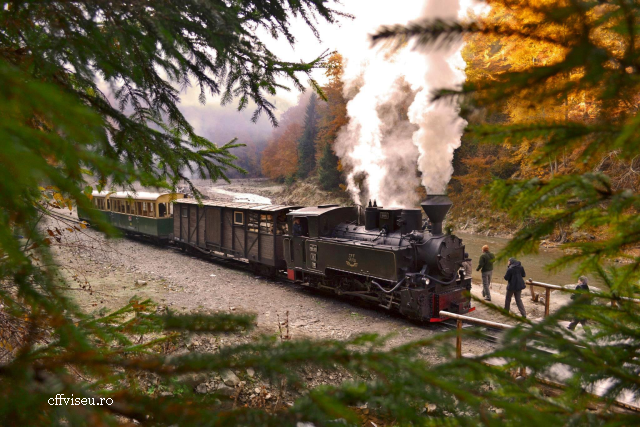A short history of the narrow gauge railway in Romania
Despite strong competition from cars and planes, the train remains a popular form of transport, with its own special charm. The narrow gauge railways with their industrial trains, today no longer used, remind us of the crafts and occupations of the past.

Steliu Lambru, 10.05.2014, 12:00
Transylvania is home to many such railway tracks, most of which were used to take people to their places of work. Woodcarving and mining as well as the related tools and equipment are today mere tourist attractions. One of the few narrow gauge trains still in circulation today runs through the Vaser Valley in Maramures, northern Romania. Built in the 1930s, these tracks measuring 760 mm and running along 57 km were mainly used to carry logs. In the old times, the people who worked with wood used to build rafts, which they filled with logs and then send them down the mountain rivers.
Another narrow gauge railway crosses the Apuseni Mountains, the wildest and most beautiful mountains in Romania. The approximately 94 km long railway links the town of Turda to Abrud and was built between 1910 and 1912. It had operated uninterruptedly until 1998, when it was closed due to low traffic and high costs. A speed train covered the 94 km route in approximately 5 hours and 30 minutes, whereas a slow train in 6 hours and 30 minutes.
Another narrow gauge train was running between the towns of Sibiu and Agnita, covering a 59 km distance, but it was abandoned in 2001. Originally, a 105-km long narrow gauge railway linked the town of Sibiu to Sighisoara, but trains stopped running between Agnita and Sighisoara in 1965.
These trains were not used exclusively in the wood industry, but also in the mining industry. They took workers and carried ore along the so-called Transylvanian Mining Railway, up to Hunedoara, one of the iron and steel centres boasting a long tradition in Romania. After 12 km and many bridges, viaducts and tunnels, it reached the famous furnace of Govajdia, the first blast furnace in Europe, built between 1806 and 1810. In 2008, the circulation of these trains was also brought to a halt, for economic reasons.
The story of the narrow gauge railway in Hunedoara is even more saddening than that of others, because it has been cut to pieces and sold as iron bars, although it had a 150-year-old history and an itinerary with huge tourist potential.
Another narrow gauge railway is the one linking Targu Mures and Praid, 66 km long, a line used mostly by peasants who came to town to peddle their farming products. It was built in 1912, but has not been used since 1997. Fortunately, in 2011, on a stretch of 17 km, between Sovata and Campu Cetatii, the narrow gauge train started circulating as a strictly tourist attraction.
However, the most spectacular narrow gauge railway in Romania is that in Comandau, Covasna County. A timber mill was built here in 1888, and the narrow gauge line was put in place to bring raw material to the factory. It was 118 km long, with a high incline, designed by Austrian engineer Emil Lux to negotiate very steep terrain.
The principle was very simple: the carriages were brought up to a platform at the top of the slope, tied by cables and a system of pulleys to another platform at the bottom. While the full carriage descended, its energy moved the platform at the top. Lifting the carriages to the top and unloading them at the bottom was powered by two horses.
In 1995, after celebrating its centennial, the two-platform system was destroyed by a powerful storm, which uprooted trees. The collapse was facilitated by years of neglect, and the dramatic decline of the wood harvesting operations in the area.






























